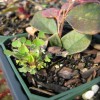 Oxalis grows throughout the year in Florida. It can be found growing in sidewalk cracks, alongside trails, in lawns, flower beds, cultivated fields, and in container nursery stock. In greenhouse studies, oxalis populations have been shown to negatively impact the growth rates of ornamental crops. This 6-page fact sheet was written by Matt Lollar and Chris Marble, and published by the UF Department of Environmental Horticulture, February 2015. (Photo: Chris Marble)
Oxalis grows throughout the year in Florida. It can be found growing in sidewalk cracks, alongside trails, in lawns, flower beds, cultivated fields, and in container nursery stock. In greenhouse studies, oxalis populations have been shown to negatively impact the growth rates of ornamental crops. This 6-page fact sheet was written by Matt Lollar and Chris Marble, and published by the UF Department of Environmental Horticulture, February 2015. (Photo: Chris Marble)
http://edis.ifas.ufl.edu/ep514
Category: Nursery & Greenhouse
Wellsina Mite Hemicheyletia wellsina (De Leon) (Arachnida: Acari: Cheyletidae)
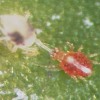 This predatory mite was recently discovered in an unsprayed greenhouse at the University of Florida, Gainesville, living on Phalaenopsis and Dendrobium orchids, and assumed to be feeding on orchid pests such as spider mites, tenuipalpid mites, and mealybugs that were present on the orchids. Because there was no published information on this species as a natural enemy of orchid pests, colonies were initiated here to study its biology, maintained on two-spotted spider mite prey. Hemicheyletia wellsina does not appear likely to be an effective natural enemy in agricultural crops as an introduced predator, but could be beneficial in natural biological control in natural ecosystems, where pest densities are lower. This 5-page fact sheet was written by Haleigh A. Ray and Marjorie A. Hoy, and published by the UF Department of Entomology and Nematology, December 2014. (Photo: Haleigh Ray, UF/IFAS)
This predatory mite was recently discovered in an unsprayed greenhouse at the University of Florida, Gainesville, living on Phalaenopsis and Dendrobium orchids, and assumed to be feeding on orchid pests such as spider mites, tenuipalpid mites, and mealybugs that were present on the orchids. Because there was no published information on this species as a natural enemy of orchid pests, colonies were initiated here to study its biology, maintained on two-spotted spider mite prey. Hemicheyletia wellsina does not appear likely to be an effective natural enemy in agricultural crops as an introduced predator, but could be beneficial in natural biological control in natural ecosystems, where pest densities are lower. This 5-page fact sheet was written by Haleigh A. Ray and Marjorie A. Hoy, and published by the UF Department of Entomology and Nematology, December 2014. (Photo: Haleigh Ray, UF/IFAS)
http://edis.ifas.ufl.edu/in1066
Selecting Cultivars of Lettuce For Production Using Hydroponics and Protected Culture in Florida
 With correct variety selection and protected culture strategies, lettuce is a crop that can present even the novice grower with a fast-growing commodity for market sale. Includes brief descriptions of hydroponic lettuce production systems, cultivars, and a table summarizing the lettuce types successfully grown in Florida using protected agriculture and hydroponic techniques. This 6-page fact sheet was written by Natalie B. Parkell, Robert C. Hochmuth, and Wanda L. Laughlin, and published by the UF Department of Horticultural Sciences, March 2015. (Photo: UF/IFAS)
With correct variety selection and protected culture strategies, lettuce is a crop that can present even the novice grower with a fast-growing commodity for market sale. Includes brief descriptions of hydroponic lettuce production systems, cultivars, and a table summarizing the lettuce types successfully grown in Florida using protected agriculture and hydroponic techniques. This 6-page fact sheet was written by Natalie B. Parkell, Robert C. Hochmuth, and Wanda L. Laughlin, and published by the UF Department of Horticultural Sciences, March 2015. (Photo: UF/IFAS)
http://edis.ifas.ufl.edu/hs1258
Biology and Management of Eclipta (Eclipta prostrata) in Ornamental Crop Production
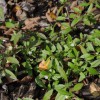 Eclipta grows aggressively in containers and can outcompete nursery crops for water, nutrients, and light. Plants flower in as little as five weeks after germination and produce thousands of seeds over the course of a growing season, and stem fragments left on the soil or media surface following hand-weeding or cultivation can root and reproduce vegetatively. This 4-page fact sheet describes the plant, its biology, and recommendations for physical, cultural, and chemical control. Written by Chris Marble, Shawn Steed, and Nathan S. Boyd, and published by the UF Department of Environmental Horticulture, January 2015. (Photo: Annette Chandler, UF/IFAS)
Eclipta grows aggressively in containers and can outcompete nursery crops for water, nutrients, and light. Plants flower in as little as five weeks after germination and produce thousands of seeds over the course of a growing season, and stem fragments left on the soil or media surface following hand-weeding or cultivation can root and reproduce vegetatively. This 4-page fact sheet describes the plant, its biology, and recommendations for physical, cultural, and chemical control. Written by Chris Marble, Shawn Steed, and Nathan S. Boyd, and published by the UF Department of Environmental Horticulture, January 2015. (Photo: Annette Chandler, UF/IFAS)
http://edis.ifas.ufl.edu/ep512
Biology and Management of Hairy Bittercress (Cardamine hirsute) in Ornamental Crop Production
 Bittercress commonly grows in the potting media of container-grown ornamentals and often through drainage holes in nursery containers. It also can be a problem in propagation houses, greenhouses, and in the field. This 6-page fact sheet provides species description, plant biology, and management recommendations. Written by Chris Marble, Shawn Steed, and Nathan S. Boyd, and published by the UF Department of Environmental Horticulture, December 2014.
Bittercress commonly grows in the potting media of container-grown ornamentals and often through drainage holes in nursery containers. It also can be a problem in propagation houses, greenhouses, and in the field. This 6-page fact sheet provides species description, plant biology, and management recommendations. Written by Chris Marble, Shawn Steed, and Nathan S. Boyd, and published by the UF Department of Environmental Horticulture, December 2014.
http://edis.ifas.ufl.edu/ep511
Postemergent Herbicides for Use In Ornamentals
 Postemergent herbicides are applied directly to weeds. This 5-page fact sheet is largely comprised of two tables: Table one lists postemergent herbicides that can be safely used over the top of some ornamentals when used according to label directions; table 2 lists postemergent herbicides that are registered for use around ornamental plants when applied as a directed spray. Written by Jeffrey G. Norcini and Chris Marble, and published by the UF Department of Environmental Horticulture, November 2014. (UF/IFAS photo: Thomas Wright)
Postemergent herbicides are applied directly to weeds. This 5-page fact sheet is largely comprised of two tables: Table one lists postemergent herbicides that can be safely used over the top of some ornamentals when used according to label directions; table 2 lists postemergent herbicides that are registered for use around ornamental plants when applied as a directed spray. Written by Jeffrey G. Norcini and Chris Marble, and published by the UF Department of Environmental Horticulture, November 2014. (UF/IFAS photo: Thomas Wright)
http://edis.ifas.ufl.edu/wg059
Parana Pine, Araucaria angustifolia: An Ancient-Looking Conifer for Modern Landscapes
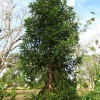 Paraná pine is a primitive-looking conifer valued for its unusual horizontal branching, interesting triangular-shaped needles, and neat, symmetrical form. The primitive appearance of this evergreen tree results from its resemblance to and relationship with an ancient group of Araucaria-related conifers that dominated forests more than 145 million years ago. This tree once covered vast areas in southern Brazil, Argentina and Paraguay. Native Americans harvest the seeds for food. It was an important timber tree for European settlers, and it was logged extensively through the 20th century. Now one of the rarest trees in Brazil, Paraná pine is considered critically endangered due to habitat loss and exploitation. This evergreen conifer grows too large for most residential situations, but is best used as an accent or conversation piece in large-scale landscapes. This 3-page fact sheet was written by Gary W. Knox, and published by the UF Department of Environmental Horticulture, November 2014.
Paraná pine is a primitive-looking conifer valued for its unusual horizontal branching, interesting triangular-shaped needles, and neat, symmetrical form. The primitive appearance of this evergreen tree results from its resemblance to and relationship with an ancient group of Araucaria-related conifers that dominated forests more than 145 million years ago. This tree once covered vast areas in southern Brazil, Argentina and Paraguay. Native Americans harvest the seeds for food. It was an important timber tree for European settlers, and it was logged extensively through the 20th century. Now one of the rarest trees in Brazil, Paraná pine is considered critically endangered due to habitat loss and exploitation. This evergreen conifer grows too large for most residential situations, but is best used as an accent or conversation piece in large-scale landscapes. This 3-page fact sheet was written by Gary W. Knox, and published by the UF Department of Environmental Horticulture, November 2014.
http://edis.ifas.ufl.edu/ep509
Mancha foliar causada por Xanthomonas en Ficus elastica
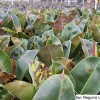 En verano del 2010, en viveros de Homestead se reportaron casos de Ficus elastica con manchas foliares circulares que se asemejan a los síntomas causados por la bacteria fitopatógena Xanthomonas campestris pv fici, aún no reportada en Ficus elastica. El daño severo affectó a la mayoría de los productores comerciales del sur de la Florida. This is the Spanish language version of Bacterial Blight of Ficus elastic Caused by Xanthomonas (PP305). This 3-page fact sheet was written by E. V. Campoverde, A. J. Palmateer, and P. Lopez, and published by the UF Department of Plant Pathology, July 2014.
En verano del 2010, en viveros de Homestead se reportaron casos de Ficus elastica con manchas foliares circulares que se asemejan a los síntomas causados por la bacteria fitopatógena Xanthomonas campestris pv fici, aún no reportada en Ficus elastica. El daño severo affectó a la mayoría de los productores comerciales del sur de la Florida. This is the Spanish language version of Bacterial Blight of Ficus elastic Caused by Xanthomonas (PP305). This 3-page fact sheet was written by E. V. Campoverde, A. J. Palmateer, and P. Lopez, and published by the UF Department of Plant Pathology, July 2014.
http://edis.ifas.ufl.edu/pp312
A Practical Guide for Aquaponics as an Alternative Enterprise
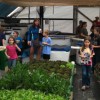 Aquaponics is an intensive sustainable agricultural production system that connects hydroponic and aquaculture systems to produce multiple cash crops with reduced water and fertilizer inputs. It is highly suited for small farm producers targeting local markets and agritourism opportunities. This 10-page fact sheet was written by Richard Tyson and Eric Simonne, and published by the UF Department of Horticultural Sciences, September 2014.
Aquaponics is an intensive sustainable agricultural production system that connects hydroponic and aquaculture systems to produce multiple cash crops with reduced water and fertilizer inputs. It is highly suited for small farm producers targeting local markets and agritourism opportunities. This 10-page fact sheet was written by Richard Tyson and Eric Simonne, and published by the UF Department of Horticultural Sciences, September 2014.
http://edis.ifas.ufl.edu/hs1252
Florida Nursery Crops and Landscaping Industry Economic Impacts, Situation, and Outlook
 Florida is one of the leading environmental horticulture producers in the United States, ranked second only to California. In 2010, total industry sales were estimated at $12.33 billion. This 10-page report summarizes the current situation, economic impacts, and outlook for the environmental horticulture industry in Florida. Written by Hayk Khachatryan and Alan W. Hodges, and published by the UF Department of Food and Resource Economics, September 2014.
Florida is one of the leading environmental horticulture producers in the United States, ranked second only to California. In 2010, total industry sales were estimated at $12.33 billion. This 10-page report summarizes the current situation, economic impacts, and outlook for the environmental horticulture industry in Florida. Written by Hayk Khachatryan and Alan W. Hodges, and published by the UF Department of Food and Resource Economics, September 2014.
http://edis.ifas.ufl.edu/fe946
Characterization of the Florida Fresh Fruit and Vegetable Industry Using Hydroponic Systems or Protected Agriculture Structures
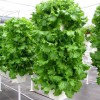 UF/IFAS Extension faculty, allied industry representatives, and growers determined the need to assess the size and scope of the protected agriculture industry in 2013 by surveying growers in Florida. The primary focus was to document the types of protected agriculture structures, crops, and growing systems being used. In addition, secondary information on location of operations, pest concerns, expected expansion, etc. was collected on many operations. The results documented a significant expansion of the industry in terms of both size and scope. This 8-page fact sheet was written by Robert C. Hochmuth and Dilcia E. Toro, and published by the UF Department of Horticultural Sciences, August 2014.
UF/IFAS Extension faculty, allied industry representatives, and growers determined the need to assess the size and scope of the protected agriculture industry in 2013 by surveying growers in Florida. The primary focus was to document the types of protected agriculture structures, crops, and growing systems being used. In addition, secondary information on location of operations, pest concerns, expected expansion, etc. was collected on many operations. The results documented a significant expansion of the industry in terms of both size and scope. This 8-page fact sheet was written by Robert C. Hochmuth and Dilcia E. Toro, and published by the UF Department of Horticultural Sciences, August 2014.
http://edis.ifas.ufl.edu/hs1240
Advertising and Promotions in the US Green Industry
 US firms that sell nursery and garden products have become more interested in effective advertising and promotion strategies. A major question for these green industry firms is how to stimulate additional sales. This 3-page fact sheet was written by Hayk Khachatryan, Alicia Rihn, Marco A. Palma, and Charles R. Hall, and published by the UF Department of Food and Resource Economics, August 2014.
US firms that sell nursery and garden products have become more interested in effective advertising and promotion strategies. A major question for these green industry firms is how to stimulate additional sales. This 3-page fact sheet was written by Hayk Khachatryan, Alicia Rihn, Marco A. Palma, and Charles R. Hall, and published by the UF Department of Food and Resource Economics, August 2014.
http://edis.ifas.ufl.edu/fe948
Florida Foliage House Plant Care: Adenium swazicum
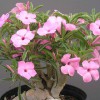 Adenium swazicum is a species of desert rose whose gray-green leaves appear folded and are velvety to touch. It is sought after by collectors for its graceful, weeping branches and delicate flowers that occur in various shades of pink. It is a smaller plant with weaker branches and stems compared to other Adenium species such as Adenium obesum or Adenium arabicum. This 2-page fact sheet was written by R.J. Henny and J. Chen, and published by the UF Department of Environmental Horticulture, April 2014.
Adenium swazicum is a species of desert rose whose gray-green leaves appear folded and are velvety to touch. It is sought after by collectors for its graceful, weeping branches and delicate flowers that occur in various shades of pink. It is a smaller plant with weaker branches and stems compared to other Adenium species such as Adenium obesum or Adenium arabicum. This 2-page fact sheet was written by R.J. Henny and J. Chen, and published by the UF Department of Environmental Horticulture, April 2014.
http://edis.ifas.ufl.edu/ep499
Managing Mexican Petunia (Ruellia simplex C. Wright) in the Home Landscape
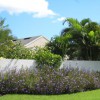 Environmental tolerance, abundant seed production, and an ability to easily grow from plant stem sections have allowed Mexican petunia to spread into natural areas that border urban areas. The Florida Exotic Pest Plant Council lists Mexican petunia (wild-type and non-sterile cultivars) as a Category 1 invasive species, meaning that it is “altering native plant communities by displacing native species, changing community structures or ecological functions, or hybridizing with natives”. These potential changes to community structure and ecological function are of particular concern in Florida wetlands, where changes to plant communities have the potential to impact not just plant-animal interactions, but also overall hydrology on a whole watershed level. This 6-page fact sheet was written by C. A. Reinhardt Adams, C. Wiese, L.C. Lee, S.B. Wilson, A. M. Smith, and R. Freyre, and published by the UF Department of Environmental Horticulture, April 2014.
Environmental tolerance, abundant seed production, and an ability to easily grow from plant stem sections have allowed Mexican petunia to spread into natural areas that border urban areas. The Florida Exotic Pest Plant Council lists Mexican petunia (wild-type and non-sterile cultivars) as a Category 1 invasive species, meaning that it is “altering native plant communities by displacing native species, changing community structures or ecological functions, or hybridizing with natives”. These potential changes to community structure and ecological function are of particular concern in Florida wetlands, where changes to plant communities have the potential to impact not just plant-animal interactions, but also overall hydrology on a whole watershed level. This 6-page fact sheet was written by C. A. Reinhardt Adams, C. Wiese, L.C. Lee, S.B. Wilson, A. M. Smith, and R. Freyre, and published by the UF Department of Environmental Horticulture, April 2014.
http://edis.ifas.ufl.edu/ep498
Livistona chinensis: Chinese Fan Palm
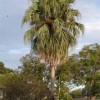 The Chinese fan palm is relatively slow growing, typically reaching about 30 feet in height. Its fan-shaped, costapalmate leaves can be 3 to 4 feet across and up to 6 feet long. Petioles of juvenile palms are spiny, but have few or no spines in adult palms. Because of its gracefully drooping leaf segment tips, this species is sometimes called the “fountain palm”. Young specimens are slow to form a trunk, which has led to the unfortunate practice of planting these palms close together as a ground cover. Eventually, most of those closely planted palms will have to be removed to accommodate their 10 to 12 foot spread. This 5-page fact sheet was written by Timothy K. Broschat, and published by the UF Department of Environmental Horticulture, April 2014.
The Chinese fan palm is relatively slow growing, typically reaching about 30 feet in height. Its fan-shaped, costapalmate leaves can be 3 to 4 feet across and up to 6 feet long. Petioles of juvenile palms are spiny, but have few or no spines in adult palms. Because of its gracefully drooping leaf segment tips, this species is sometimes called the “fountain palm”. Young specimens are slow to form a trunk, which has led to the unfortunate practice of planting these palms close together as a ground cover. Eventually, most of those closely planted palms will have to be removed to accommodate their 10 to 12 foot spread. This 5-page fact sheet was written by Timothy K. Broschat, and published by the UF Department of Environmental Horticulture, April 2014.
http://edis.ifas.ufl.edu/st365
Roystonea regia: Royal Palm
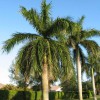 The royal palm is a large majestic palm that is native to south Florida and Cuba. It is considered cold hardy to about 28°F or USDA Cold Hardiness Zone 10A. This species quickly grows to heights of 50–70 ft., with a spread of 20–25 ft., and has a smooth light gray trunk up to 2 ft. in diameter. It is ideal for landscaping streets, parks, and commercial properties, but becomes too large for typical residential landscapes. This 4-page fact sheet was written by T.K. Broschat, and published by the UF Department of Environmental Horticulture, February 2014.
The royal palm is a large majestic palm that is native to south Florida and Cuba. It is considered cold hardy to about 28°F or USDA Cold Hardiness Zone 10A. This species quickly grows to heights of 50–70 ft., with a spread of 20–25 ft., and has a smooth light gray trunk up to 2 ft. in diameter. It is ideal for landscaping streets, parks, and commercial properties, but becomes too large for typical residential landscapes. This 4-page fact sheet was written by T.K. Broschat, and published by the UF Department of Environmental Horticulture, February 2014.
http://edis.ifas.ufl.edu/st574
Floriculture Crops Economic Outlook for 2014
 This 15-page report summarizes industry statistics using data from primary and secondary sources and highlights production and sales trends in the US environmental horticulture industry in 2014. Data sources include the United States Department of Agriculture National Agricultural Statistics Service (USDA/NASS), US Census Bureau, the IBIS World Industry Reports, National Association of Home Builders, S&P/Case-Shiller Home Price Indices, US Bureau of Labor Statistics, University of Florida Bureau of Economic and Business Research, AIA Economics and Market Research Group, and Florida Realtors®. Primary data is collected through the National Nursery Survey, conducted by the Green Industry Research Consortium. Written by Hayk Khachatryan, Alan W. Hodges, and Shawn Steed, and published by the UF Department of Food and Resource Economics, March 2014.
This 15-page report summarizes industry statistics using data from primary and secondary sources and highlights production and sales trends in the US environmental horticulture industry in 2014. Data sources include the United States Department of Agriculture National Agricultural Statistics Service (USDA/NASS), US Census Bureau, the IBIS World Industry Reports, National Association of Home Builders, S&P/Case-Shiller Home Price Indices, US Bureau of Labor Statistics, University of Florida Bureau of Economic and Business Research, AIA Economics and Market Research Group, and Florida Realtors®. Primary data is collected through the National Nursery Survey, conducted by the Green Industry Research Consortium. Written by Hayk Khachatryan, Alan W. Hodges, and Shawn Steed, and published by the UF Department of Food and Resource Economics, March 2014.
http://edis.ifas.ufl.edu/fe941
Factors Affecting Consumer Preferences and Demand for Ornamental Plants
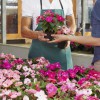 The primary goal of this study is to assist industry participants by providing information about consumer purchasing preferences, including information about past and future expenditures on ornamental plants, plant-specific and store-specific factors that influence purchase decisions. Additionally, the study sought to determine whether providing consumers with information about the health and well-being, environmental, and economic benefits of ornamental plants had any effects on consumer preferences for ornamental plants. The main results of the survey are briefly summarized below. The full report titled “Investigation of Factors Affecting Consumer Preferences and Demand for Ornamental Plants” can be downloaded from the UF Horticulture Economics and Marketing Research Program website at http://fred.ifas.ufl.edu/horticulture-economics/publications.shtml”. This 5-page fact sheet was written by Hayk Khachatryan and Hee Jung Choi, and published by the UF Department of Food and Resource Economics, February 2014.
The primary goal of this study is to assist industry participants by providing information about consumer purchasing preferences, including information about past and future expenditures on ornamental plants, plant-specific and store-specific factors that influence purchase decisions. Additionally, the study sought to determine whether providing consumers with information about the health and well-being, environmental, and economic benefits of ornamental plants had any effects on consumer preferences for ornamental plants. The main results of the survey are briefly summarized below. The full report titled “Investigation of Factors Affecting Consumer Preferences and Demand for Ornamental Plants” can be downloaded from the UF Horticulture Economics and Marketing Research Program website at http://fred.ifas.ufl.edu/horticulture-economics/publications.shtml”. This 5-page fact sheet was written by Hayk Khachatryan and Hee Jung Choi, and published by the UF Department of Food and Resource Economics, February 2014.
http://edis.ifas.ufl.edu/fe938
Plumeria: Propagation from Cuttings
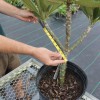 Plumeria are flowering ornamentals native to the Caribbean, Mexico, Central America, Venezuela, and Colombia. Highly valued for their colorful flowers, plumeria are now grown in tropical and subtropical areas throughout the world. Plumeria, or frangipani, are members of the Apocynaceae family. Unless steps are taken to prevent frost damage, plumeria are generally limited to landscape uses in south Florida and protected regions of central Florida. This 5-page fact sheet was written by Andrew K. Koeser, Gitta Hasing, and Drew McLean, and published by the UF Department of Environmental Horticulture, October 2013.
Plumeria are flowering ornamentals native to the Caribbean, Mexico, Central America, Venezuela, and Colombia. Highly valued for their colorful flowers, plumeria are now grown in tropical and subtropical areas throughout the world. Plumeria, or frangipani, are members of the Apocynaceae family. Unless steps are taken to prevent frost damage, plumeria are generally limited to landscape uses in south Florida and protected regions of central Florida. This 5-page fact sheet was written by Andrew K. Koeser, Gitta Hasing, and Drew McLean, and published by the UF Department of Environmental Horticulture, October 2013.
http://edis.ifas.ufl.edu/ep489
Nematode Management for Bedding Plants
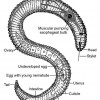 Florida is the “land of flowers.” Surely, one of the things that Florida is known for is the beauty of its vegetation. Due to the tropical and subtropical environment, color can abound in Florida landscapes year-round. Unfortunately, plants are not the only organisms that enjoy the mild climate. Due to warm temperatures, sandy soil, and humidity, Florida has more than its fair share of pests and pathogens that attack bedding plants. Plant-parasitic nematodes can be among the most damaging and hard-to-control of these organisms. This 11-page fact sheet was written by William T. Crow, and published by the UF Department of Entomology and Nematology, February 2014.
Florida is the “land of flowers.” Surely, one of the things that Florida is known for is the beauty of its vegetation. Due to the tropical and subtropical environment, color can abound in Florida landscapes year-round. Unfortunately, plants are not the only organisms that enjoy the mild climate. Due to warm temperatures, sandy soil, and humidity, Florida has more than its fair share of pests and pathogens that attack bedding plants. Plant-parasitic nematodes can be among the most damaging and hard-to-control of these organisms. This 11-page fact sheet was written by William T. Crow, and published by the UF Department of Entomology and Nematology, February 2014.
http://edis.ifas.ufl.edu/in470